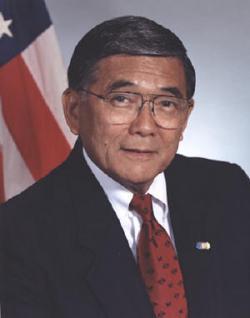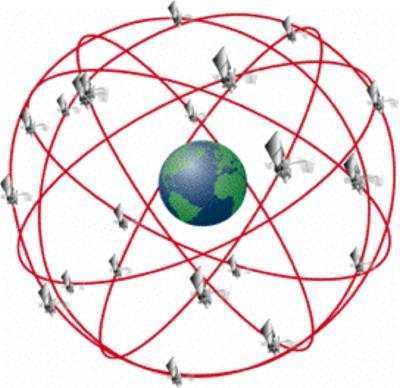Things Might Be Tense In A Military Sense, But You Can Still
Get A Flight
 From the Open Skies Conference
Thursday in Ottawa...
From the Open Skies Conference
Thursday in Ottawa...
I appreciate the kind introduction, and I’m overwhelmed by
that very warm welcome. It tells me that I am not alone in
looking forward to expanding upon what is already a very positive
and productive aviation relationship between the United States and
Canada.
I would be remiss if I did not begin my remarks with a very
sincere and personal thank you. Our partnership was tested on
September 11th, 2001.
As soon as the third plane hit the Pentagon, I issued the
order to ground all aircraft flying over United States airspace and
to bring them down immediately.
Clearing the skies that horrific morning could not have been
accomplished without the extraordinary cooperation that we received
from our Canadian neighbors. I will never forget the pictures of
aircraft lined up wingtip-to-wingtip in places like Gander, nor the
stories of heartwarming hospitality shown to stranded passengers
who were taken in by Canadian families.
On behalf of President Bush, Vice President Cheney, and the
people of the United States, let me once again express our deepest
gratitude to our friends in Canada for being the best possible
neighbors -- the kind who come through in times of crisis.
This experience provides an important context for discussing the
current aviation relationship between the United States and Canada,
and where I hope that it can be headed.
 Ten years ago, our countries signed
the Canada-United States Air Services Agreement,
significantly opening the air services market across our
borders.
Ten years ago, our countries signed
the Canada-United States Air Services Agreement,
significantly opening the air services market across our
borders.
The results of liberalization speak for themselves -- greater
choice and convenience for passengers, better fares, and a rapidly
developing cargo market. And, in a larger context, all of
this activity strengthens our economies and our communities,
benefiting businesses and workers alike.
Airlines now offer passengers scheduled nonstop service between
more than 150 trans-border airport pairs, an increase of more than
50 percent since 1994. Last year, there were over 372
thousand flights between our two countries -- almost twice as many
as a decade ago.
Those airplanes carried over 18 million passengers compared to
12.1 million passengers in 1994 under the older and more
restrictive bilateral agreement.
And ticket prices have fallen by almost 20 percent since the
agreement and by more than a third when you adjust for
inflation.
The effect of the agreement on air cargo has been even more
dramatic.
In 1994, approximately 121 thousand tons of scheduled cargo was
carried by air between our countries. Ten years later, that
figure had risen to almost 271 thousand tons, an astonishing 124
percent increase.
Businesses in 31 cities in Canada and 177 cities in the United
States can ship air freight directly across the border.
That’s 81 more cities in the United States than had direct
service ten years ago, lending important support for our strong and
growing trade relationship under the North American Free Trade
Agreement.
NAFTA also has provided a context for cooperation and
collaboration in other aviation arenas through the North American
Aviation Trilateral.
Whether through the coordinated placement of Wide Area
Augmentation System reference stations in Canada, Mexico, and
the United States, or the recent establishment of a regional
monitoring agency to implement Reduced Vertical Separation Minimum
standards, the NAAT is laying a foundation for aircraft to move
seamlessly throughout North America.

But while we gather today to celebrate the enormous success of
aviation cooperation between the United States and Canada, we do so
mindful of the limitations of the 1995 agreement.
The United States and Canada, the closest of neighbors and
strongest of trading partners, still do not enjoy the full
“open skies” relationship that the United States has
with 67 other countries around the world -- from Germany to Chile,
and from Poland to Korea.
Countries from every region of the world, and at every level of
development, are increasingly adopting open skies agreements.
This embrace of open skies reflects a growing understanding of the
larger economic significance of international air services,
and the importance of allowing airlines to respond to market
demand.
But we don’t have open skies, quite, when it comes to air
service between the United States and Canada. The current agreement
leaves in place barriers that deny airlines fifth freedom rights
and limit multi-city cargo deliveries.
And that doesn’t do justice to the strong overall
relationship between our countries, to our robust trade
relationship, or to the cooperation that we have in other areas of
aviation. Imagine how strange it would be if, instead of NAFTA, the
United States and Canada defined our trade relationship with
something less than most favored nation status.
Clearly, this situation needs to change. In fact, the United
States and Canada ought not to be playing catch-up when it comes to
air services -- we ought to be setting the pace.
That’s my vision. And I believe that the stars are
aligning to make it a reality.
Here in Canada, you have a Transport Minister who recognizes the
need to maximize the benefits of aviation services. Minister
Lapierre and I met earlier today, and I was most
encouraged.
Our discussions show clear ground for progress and suggest that
we share a common vision. Based on today’s discussions, I
believe that we can move ahead quickly with exploratory discussions
to establish a framework for a more open bilateral agreement.
 We are eager for such an agreement
on our side of the border. President Bush has described Canada as
“America's most vital trade relationship in the whole
world,” and pledged that “we will do all that is
necessary to keep that relationship strong.”
We are eager for such an agreement
on our side of the border. President Bush has described Canada as
“America's most vital trade relationship in the whole
world,” and pledged that “we will do all that is
necessary to keep that relationship strong.”
At that same meeting, Prime Minister Martin spoke of
Canadians’ determination “to ensure our border remains
an example to the world in its openness to trade and its
demonstration of trust.”
Negotiating the strongest, most open bilateral air services
agreement possible -- one that helps goods and people to move
easily and conveniently across our borders -- is an important step
that we, in the transportation community, can take to help fulfill
our leaders’ pledge.
We have before us an historic opportunity to fully open the air
services market to the benefit of consumers, cities and carriers on
both sides of the border.
The potential benefits of taking this step forward could go far
beyond “simply” opening the world’s largest
aviation market, or even the further integration that could follow
it.
Rather, I believe that a bilateral Open Skies agreement would be
an important step towards realizing the “vision of
NAFTA” in aviation -- that is, towards creating a North
American regional trading bloc for air services.
As many of you know, the United States spent much of last
year negotiating with the European Union in an attempt to
liberalize the transatlantic air services market.
 During our discussions with the
EU, I was struck by how much progress Europe has made,
notwithstanding differences that may persist among the member
states, in achieving regional unity as an aviation trading
bloc.
During our discussions with the
EU, I was struck by how much progress Europe has made,
notwithstanding differences that may persist among the member
states, in achieving regional unity as an aviation trading
bloc.
And it also occurred to me how valuable it would be, for both
Canada and the United States, for North America to be similarly
unified in our approach to aviation.
If Canada and the United States could fully liberalize our
bilateral market, we could then work together to achieve regional
liberalization across the Atlantic, in the Western Hemisphere, and
with Asia.
If this sounds like an ambitious vision, it is. And we should
begin to measure up to that ambition.
I’m optimistic that today can mark a new beginning, with
Canada and the United States serving as the architects of the new
template that will define international air services relationships
into the next decade and beyond.
I appreciate the opportunity to join you today to celebrate the
10th Anniversary of our current air services agreement and begin to
envision what may lie ahead.
Thank you all for being here, and travel safely.
 Classic Aero-TV: The Switchblade Flying Car FLIES!
Classic Aero-TV: The Switchblade Flying Car FLIES! ANN FAQ: Q&A 101
ANN FAQ: Q&A 101 ANN's Daily Aero-Term (04.12.24): Discrete Code
ANN's Daily Aero-Term (04.12.24): Discrete Code ANN's Daily Aero-Term (04.13.24): Beyond Visual Line Of Sight (BVLOS)
ANN's Daily Aero-Term (04.13.24): Beyond Visual Line Of Sight (BVLOS) ANN's Daily Aero-Linx (04.13.24)
ANN's Daily Aero-Linx (04.13.24)






